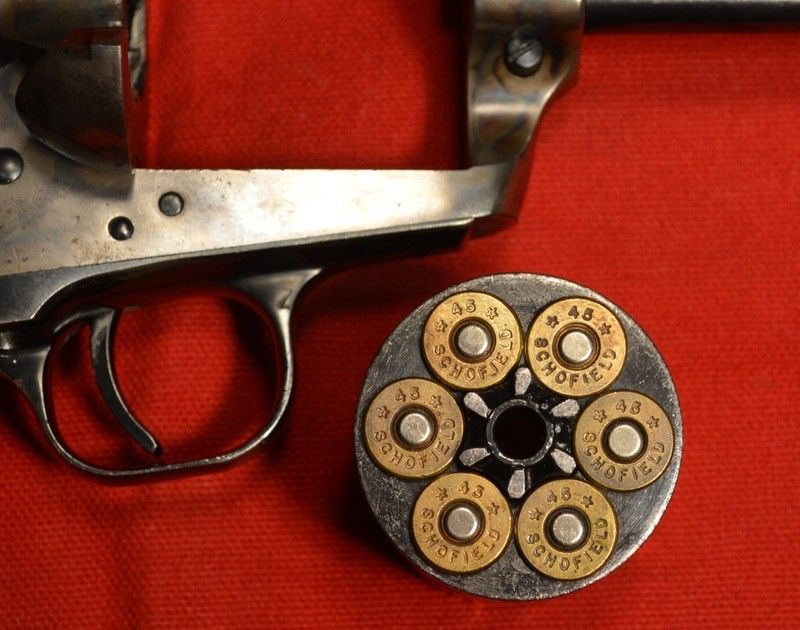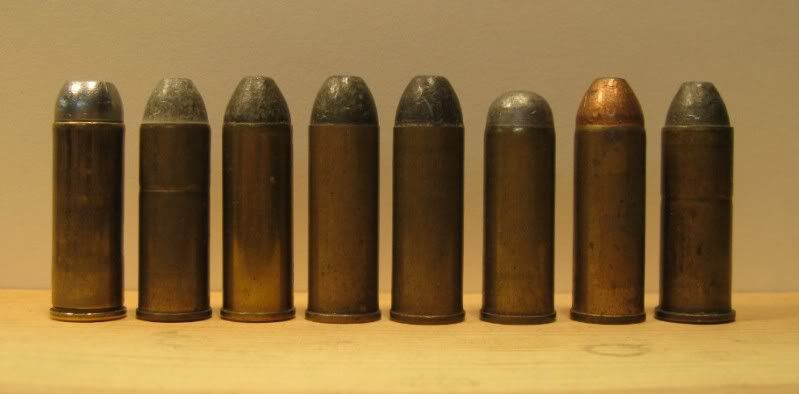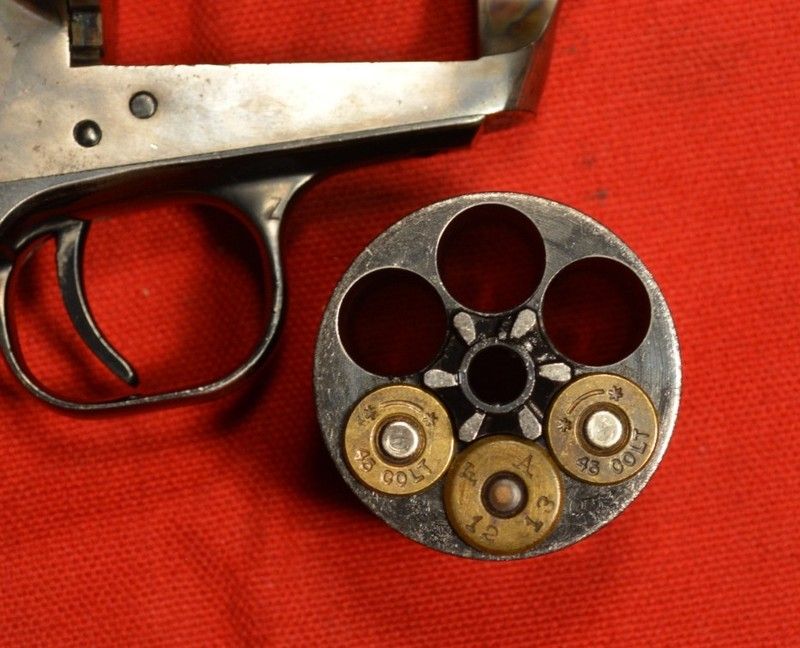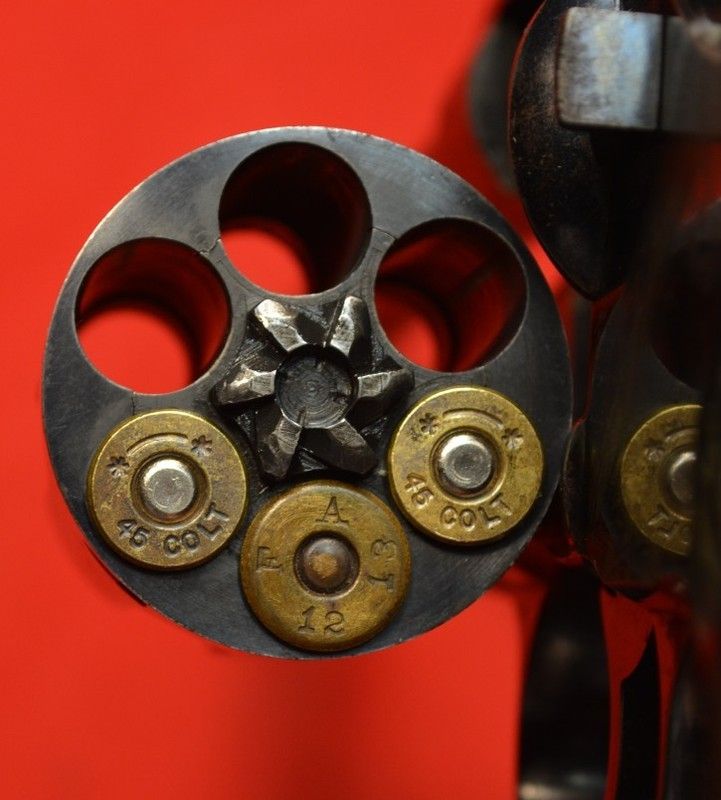Howdy Again
I stand by everything I said about being able to fire Schofield rounds in a Colt Single Action Army. I have fired hundreds of them. Without any problem with rims overlapping. Here is the cylinder from one of my 2nd Gen Colts, fully loaded with 45 Schofield ammo. The rims on these rounds are right at the nominal diameter, .520.
I took everything Webleymkv said at face value. Everything he said was stated in the present tense, nothing was mentioned about what the situation would have been with ammo 140 or so years ago.
But historically, as I believe I stated some time ago, the Revolver Ball Cartridge, Caliber 45, M1875, M1882, M1890, and M1896 were the length of the round we call the Schofield round today. The rims were sized so they could be fired in the SAA or the Schofield revolver.
The "every other round" story appears to have originated not with the .45 Schofield, but with the .45 Model 1909 cartridge, which was made by the Army for the Model 1909, a Colt New Service swing cylinder revolver. While Colt made them for .45 Colt, the Army found that the small rim jumped the extractor, and ordered Frankford to make special ammo with a larger rim. It was that ammunition that could be loaded into the SAA only by leaving three chambers empty.
Thank you James K for writing that.
Here is my Colt New Service, chambered for 45 Colt. It was made in 1906, a little bit before the Army adopted it as the Model 1909. You can see it is a really big gun, bigger than the SAA below it.
Now let's talk rims. Some of you have probably seen this photo of 45 Colt cartridges before. All the way on the left is a modern 45 Colt cartridge. All the other rounds are old rounds of various vintages. Notice how small their rims are. Now take a look at the round all the way on the right. That is the Model 1909 cartridge that James K is talking about. Take a look at how wide that rim is. It is a whopping .538 in diameter.
In this photo I have placed the 1909 cartridge in the SAA cylinder. Yup, no way two of those would fit next to each other in adjacent chambers. The other two rounds are modern 45 Colt brass. By the way, the notation on the case head, FA 12 13, means the round was made at the Frankford Armory in December of 1913.
Their is plenty of room in the cylinder of the New Service. As James K said, the extractor could easily jump over the small rims of 45 Colt ammo of the day, but it was not going to jump over that fat .538 diameter rim.








